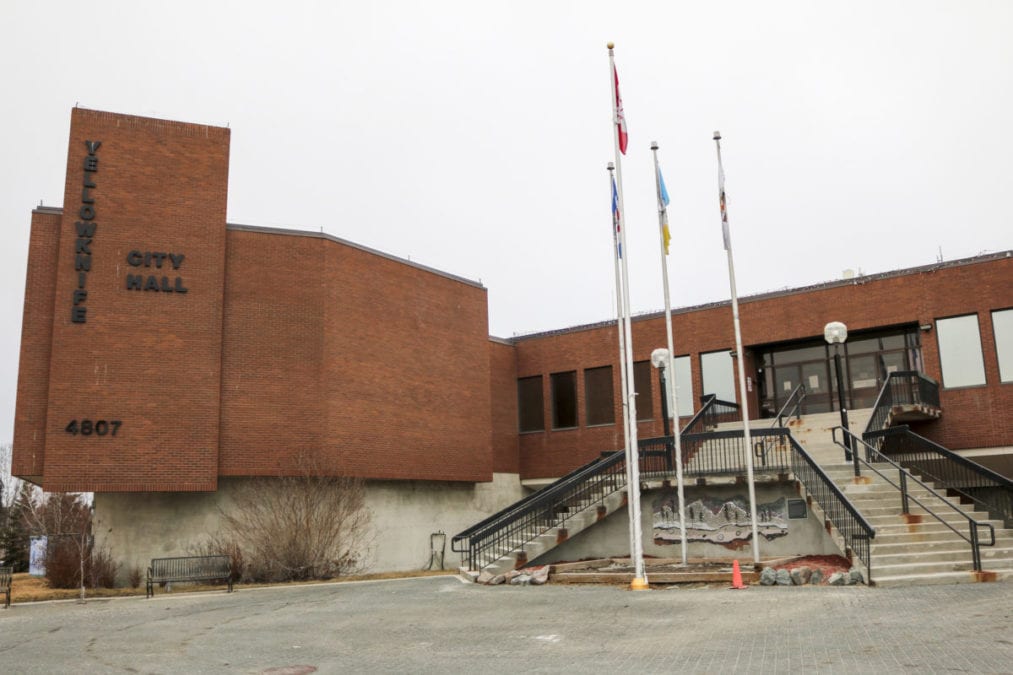The City of Yellowknife took its first steps toward repealing and rewriting its 12-year-old zoning bylaw as council was presented with administration's plan to update and ease the process for regulating land use during Monday's governance and priorities meeting.
Council is not expected to see a draft zoning bylaw document until the new year, however planners promised eventual ease to development red tape that is preventing developers and development officers from properly carrying out planning.
The zoning bylaw process follows the GNWT Department of Municipal and Community Affairs' final approval of the city's community plan in July 2020 which lays out the city's broad vision for general development in the city.
The zoning bylaw complements this exercise through more specific regulations around land use, new buildings and building development within the municipality.
RELATED COVERAGE: Yellowknife Community Plan passes second reading
City of Yellowknife Community Plan
Greg Littlefair, director of the planning and development division with the city, and Rob Lok, manager of planning and lands, provided a presentation laying out the schedule for consultations on the zoning bylaw before it is expected to pass early next spring.

NNSL file photo
Margaret Kralt, project manager with Dillon Consulting, who was also a lead consultant on the city's community plan was present for the meeting.
All three pointed out that the current zoning bylaw, which has been in existence at the city since 2008, has seen close to 80 amendments over that time. As a result, the document has become extremely cumbersome for city planners to use in carrying out council's main goals for the community.
"At some point in time the bylaw becomes a patchwork of amendments rather than a comprehensive document that reflects the direction provided by the community plan than council's goals and objectives," Lok said. "It points to a need for repeal and replacement of the bylaw rather than another amendment."
Council has identified the need to prioritize land infill – or re-purposing of land within an urban environment – increase density in city spaces and build a more of a sustainable community when it comes to future growth. This is taking priority generally over continuing new residential construction on the periphery of the city limits.
Lok explained in more detail that the current status of the zoning bylaw is very difficult for the planning division to use as a document to meet community goals, particularly around downtown revitalization. Upgrades to development permits will make the process easier for both development officers and developers, he added.
He laid out a whole list of grievances about the zoning bylaw including of the actual document which he depicted as being outdated – in typeface and with no hyper links.
Other elements hinder the city's plans for overall growth, he said.
"The parking requirements are too prescriptive and don't support other city goals like downtown revitalization and don't support small business," he said.
Among the problems are requirements in the zoning bylaw that don't apply to Northern climates and context, such as landscaping and zones that overlap or that are too numerous and complex.
There is also the need for more clarity as it pertains to conditionally permitted uses versus permitted uses, upgrades to quarry standards and regulations, and notifications and appealing process to developments needing to be more user-friendly.
Coun. Julian Morse was one who sympathized with the need for the development process to be less restrictive.
"All these conditional use discussions that come to council have created a situation where zoning isn't particularly permissive," he said.
"When we're talking about creating an atmosphere in which the city is trying to spur and encourage development, we don't want a bylaw that is overly restrictive or involves these complicated processes that developers have to go through in order just to get a building on the ground."
Coun. Niels Konge, a developer with Konge Construction, said that council's input, if done right, will have a positive lasting impact on development in the city. He agreed with the presenters that a new zoning bylaw will hopefully lead to solutions to ongoing challenges between developers and city planners.
"It's pretty exciting," he said. "The current bylaw has been around for over a decade. There are not too many things that council does that will have that much influence over such a long period of time. Even our budget, that's one year, and we have some forecasts for what we're going to do into the future.
"This here will guide the development for probably a decade or longer. So that's really, really exciting."
Deneen Everett, executive director of the Yellowknife Chamber of Commerce, said that the direction of completing the community plan and now working toward updated bylaws is important to her membership and the business community. The city has been responsive to these needs from her organization, she added.
"Our position has been that there is a need to address the lack of commercial space available and the need for the city to make better use of space available or space that is underused and planning for diverse needs – like agriculture or growing tourism," Everett said.
She added that potential development in the area of the Yellowknife airport will hopefully be addressed with the updated zoning bylaw.
"The community plan is great document and the chamber is pleased with how it has shaped up. So now there is the need for bylaw review updates to see the implementation of actions outlined in the community plan."